Experience California Missions
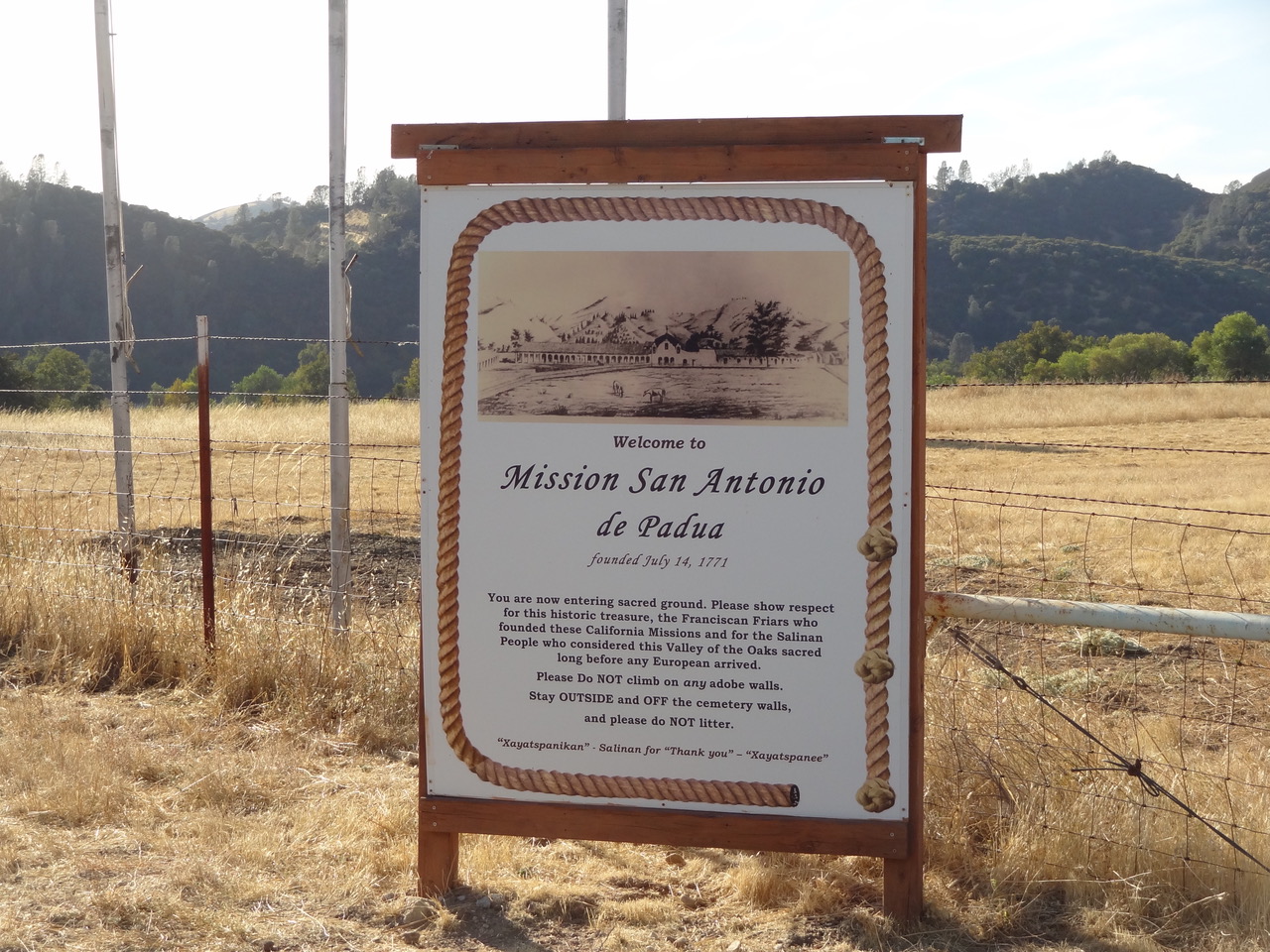
It was truly a once in a lifetime trip! The MClub (Montecito Bank & Trust travel club) was invited by executive director/CEO David Bolton of the California Missions Foundation (CMF) to join him on a special overnight tour to Mission San Antonio de Padua and tours of Mission San Miguel and Mission San Luis Obispo including wine tastings and a Four Nations Candlelight Dinner. Who’s ever gotten to sleep in a Mission?
We began the trip at the train station in Santa Barbara where we climbed aboard the business class car for a scenic ride to San Luis Obispo. The porter immediately passed out wine and we enjoyed views not seen by car of Vandenberg and Point Conception. In San Luis there was a van waiting and we headed north to Mission San Antonio. David met us with champagne in hand before we took our luggage to our rooms. This Mission is one of the few of 21 with bedrooms. We did call it “glamping” because there were no bathrooms en-suite but we did have a sink in our room and facilities just down the hall.
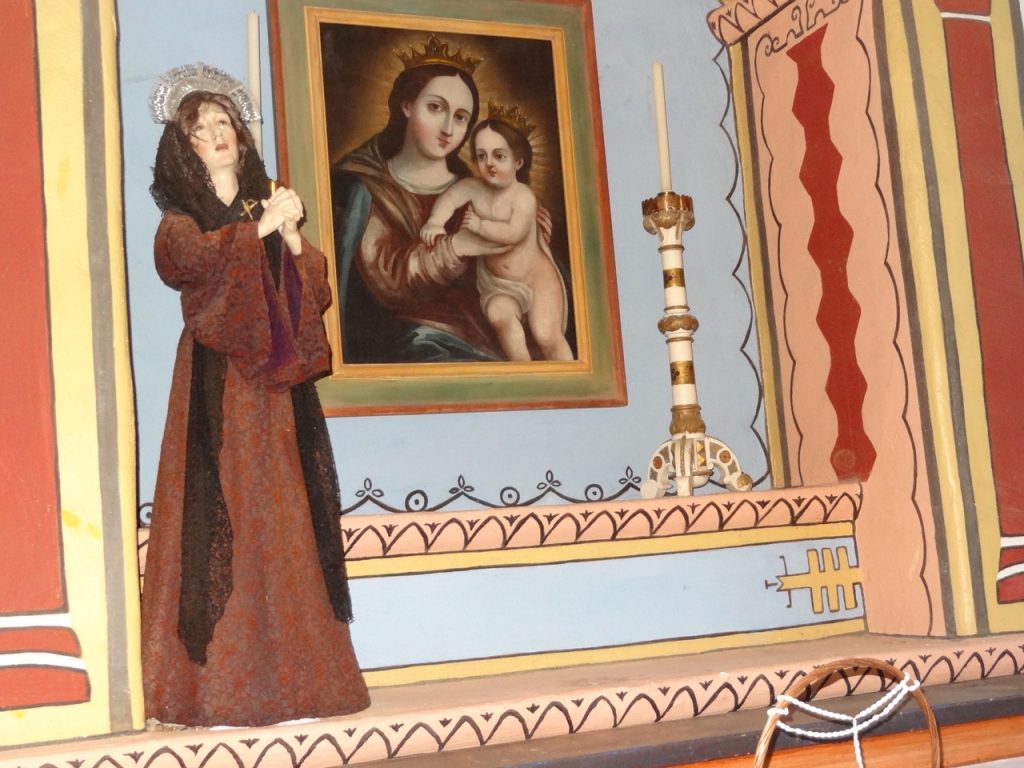
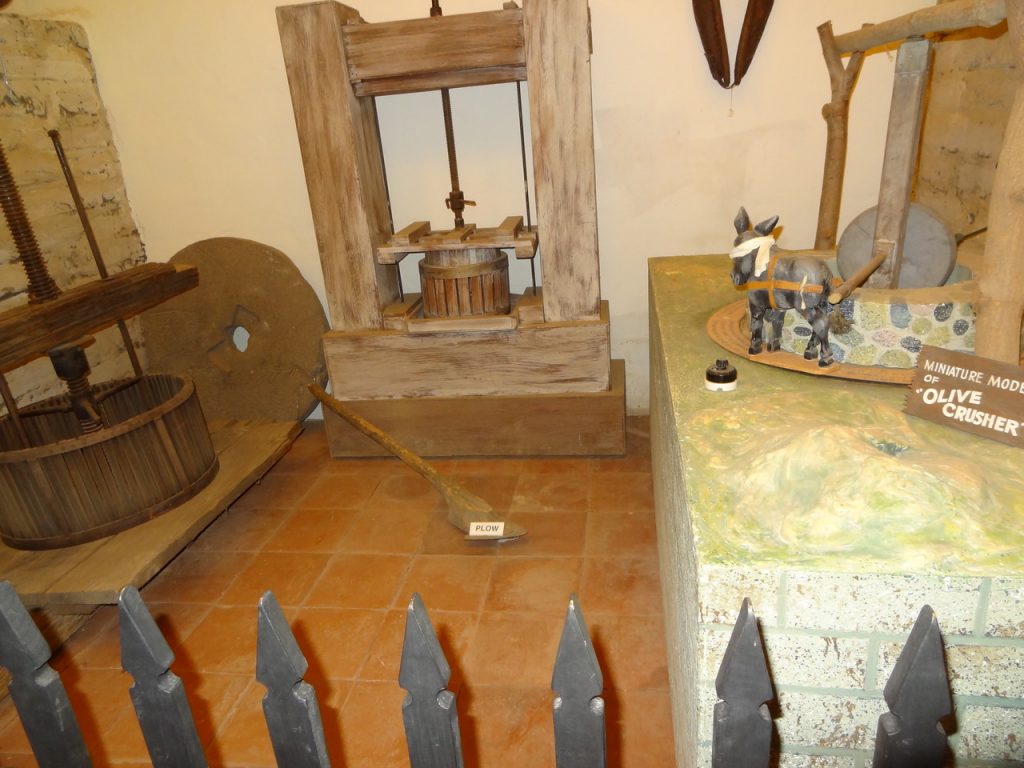
This Mission stands on what was once Hearst ranch property. William Randolf used to bring weekend guests to see it. It is also unique because there is no town built around it. It is a pristine setting as it was 250 years ago when it was built in 1771 by Padre Junipero Serra, the third in California. It is near a U.S. military but not visible from the base and also in the Valley of the Oaks.
Board member and Mission expert Dr. Robert Hoover took us on a tour of Mission San Antonio. In 1771 Padres Junipero Serra, Miguel Pieras and Benaventura Sitjaar hung the bells on the branches of an oak tree and named the mission San Antonio de Padua. In 1773 the site of the mission was moved to a place further up Los Robles Valley because of an unstable water source. There were by now about 163 converts and it was the year of the first marriage. There were adobe buildings and by 1781 tile roofs. In 1810 the third church structure was started and still stands today. In 1834 the period of secularization began with San Antonio becoming Mexican government property. That was the beginning of the Mission falling into neglect. In 1862 the U.S. Land Commission formally returned Mission property to the Church. San Antonio received the title to 33 acres with the decree signed by the office of President Abraham Lincoln. From 1948 to 1952 the Franciscans completed the reconstruction. It was then turned over to the Diocese of Monterey. They continue to host group retreats, maintain a gift shop and serve as an active Catholic parish. We went to mass the Sunday we were there. And the gift shop was packed with treasures. There’s also a museum. It’s so far out in the country, you wonder where all the people come from. Some could be from the military base.
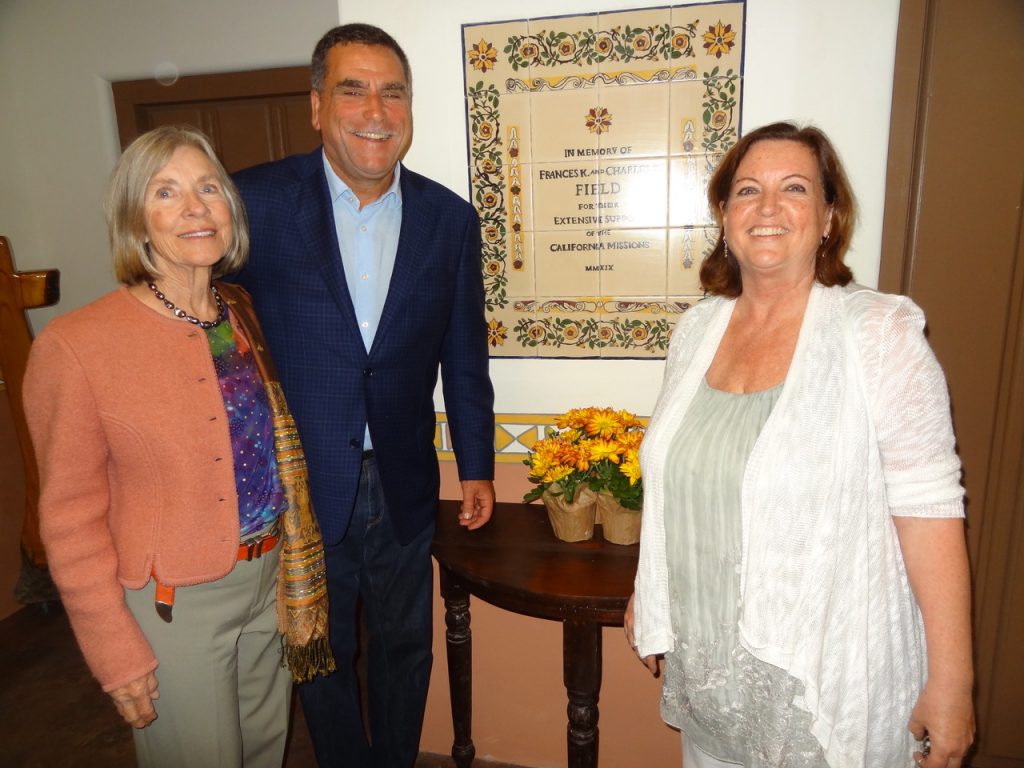
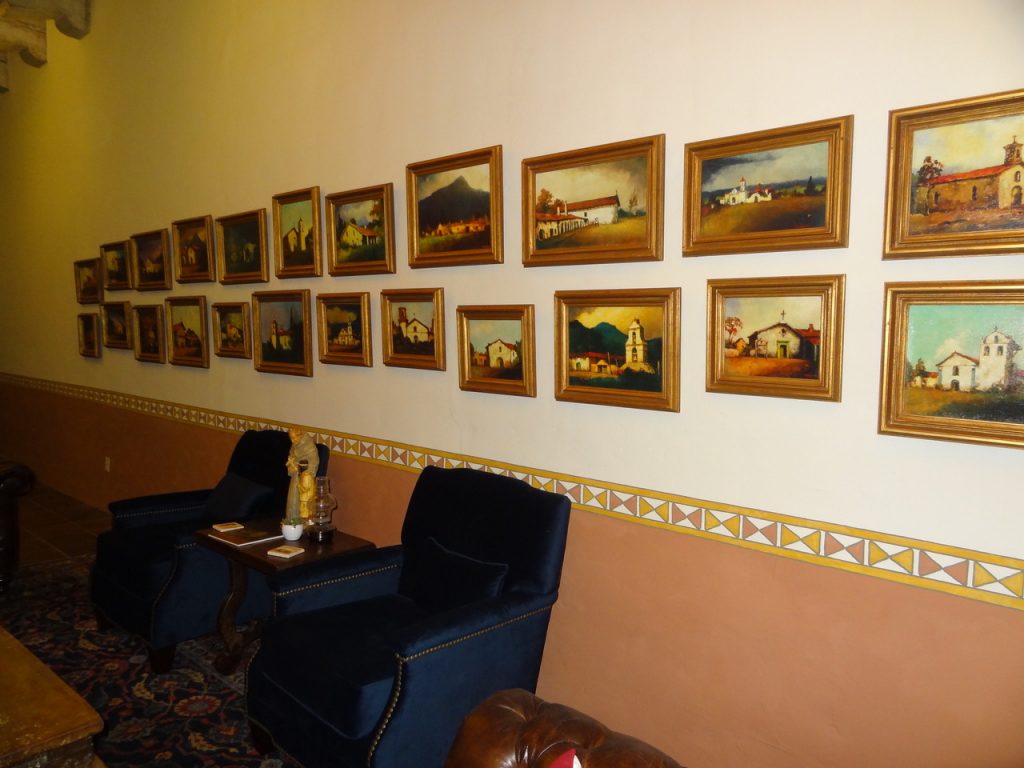
Our evening began with wine and bites in the foyer of their brand new Mission Gallery. We were “cutting the ribbon” so to speak. On one of David’s visits he saw the room which had been the Franciscan’s library. When the Franciscans left the Mission they took all of their books and so the space had been through many uses, some just for storage. David was able to get $100,000 funding for a remodel from the Field Foundation – long-time Mission supporters. Even the floor tiles are special and come from Mexico especially crafted to match the Mission floors. There were electrical and lighting upgrades and painting on the walls in the Senefa style topped off with period style furnishing and artifacts they found throughout the Mission complex. It has been renamed the Field Gallery and has a CMF tile plaque on the foyer wall. It’s a lovely room for many events and has antique paintings of all 21 Missions on the wall.
We adjourned to the courtyard for a Four Nations Candlelight dinner, the signature menu created by Bolton. It was inspired by the four nations that have governed the lands of California: Native Californians, Spanish, Mexicans, and the U.S. Each course brought together the rich history of California and our state’s missions, peoples, and preservation. The first course was a salad with elderberry vinaigrette. Elderberries are native to California. The second course was a dish known to Cuba, ropa vieja (which literally means old dress). The meal ended with the U.S. influence of cheesecake. This was all prepared by “Chef” David who wears a couple of hats. The harvest table set for 35 in the courtyard was stunning with 3-foot-high silver candelabras and olive bows down the center. And the guests sparkled in their evening attire as well. Toasts and applause were all around.
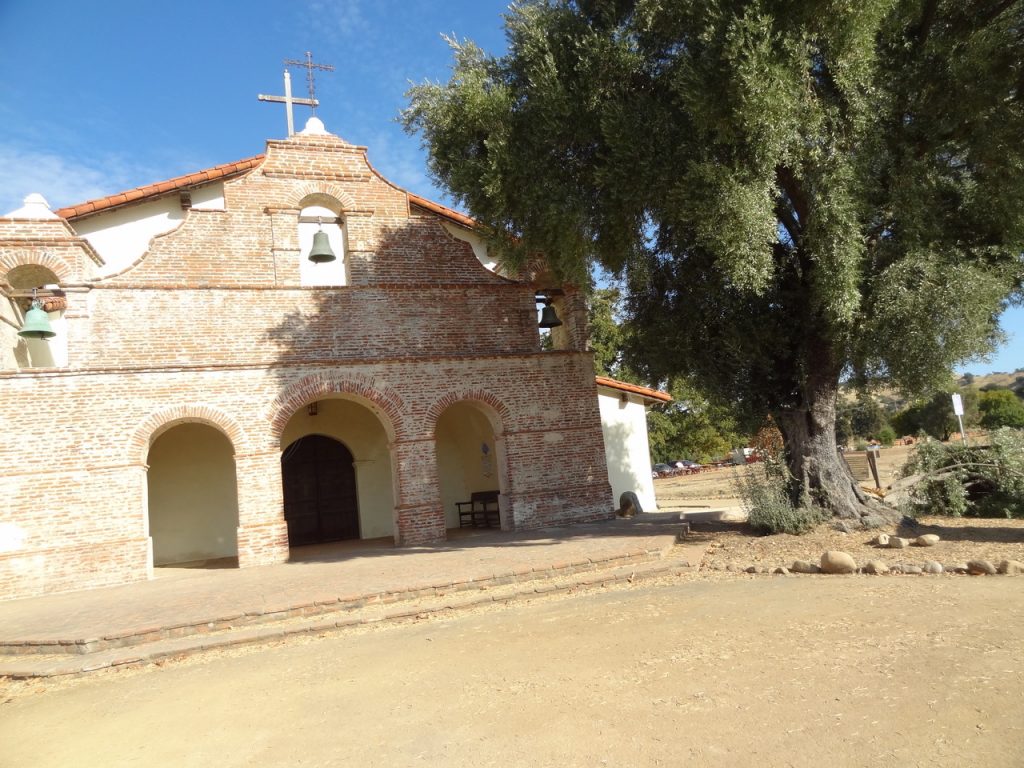
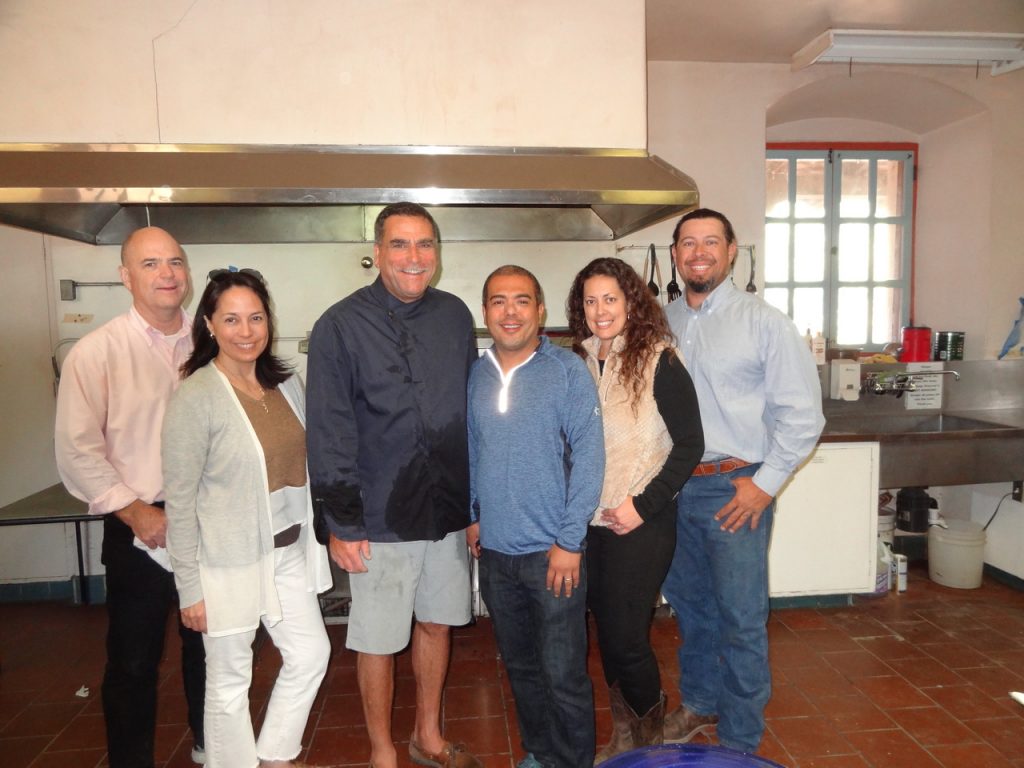
To end the perfect evening there was a musicale in the Mission church with Craig Russell, who is a noted early California baroque musician playing a period guitar.
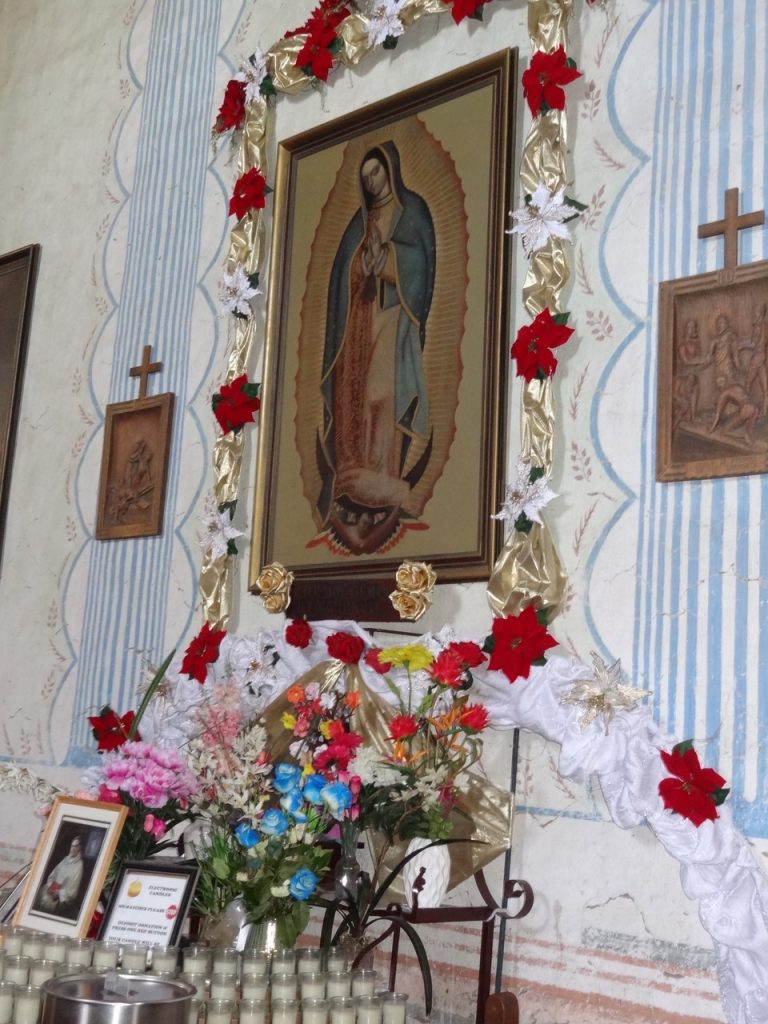
The next day we gathered for breakfast in the Mission Courtyard dining room and were served a delicious sausage dish plus fresh squeezed orange juice and French pressed coffee. Yum! Don went to mass and I wandered about taking photos. After mass it was time to head out to Mission San Miguel.
San Miguel was named for Archangel Saint Michael and founded by Franciscan Father Fermin Francisco de Lasuen in 1797, the 16th mission. It was meant to close the gap between Mission San Antonio to the north and Mission San Luis Obispo to the south. The Missions were supposed to be a one day walk apart. It is located in the town of San Miguel. The site was specifically chosen due to the large number of Salinan Indians that inhabited the area and the priests wanted to evangelize the community. It is the only mission with the original unretouched wall paintings. There is a sulfur bath nearby that all enjoyed. Their river runs north so the locals call it the upside-down backwards river.
On to Mission San Luis Obispo for a box lunch in the Mission and a tour led by expert Dr. Daniel Krieger and some of their many docents. The Mission was founded in 1772 by Father Serra and named San Luis Obispo de Tolosa. It was named after Saint Louis of Anjou, the bishop of Toulouse and is the namesake of the town San Luis Obispo. Our docent, Wendy, whose family has been living a long time in San Luis told us, “I’m to be married in the church next April.” She loved telling Mission stories. My favorite was about the church doors which open at two different heights. The tallest is so you could bring your horse inside. In Spain where we lived in the 1970s the horses would bow on the church steps for special festivals. The lower door was people size.
Our overnight stay was the first in a series of CMF events to commemorate the 250th anniversary of the founding of the California Missions. Our journey into the past was nearly over as we boarded the Coast Starlight train back to Santa Barbara.
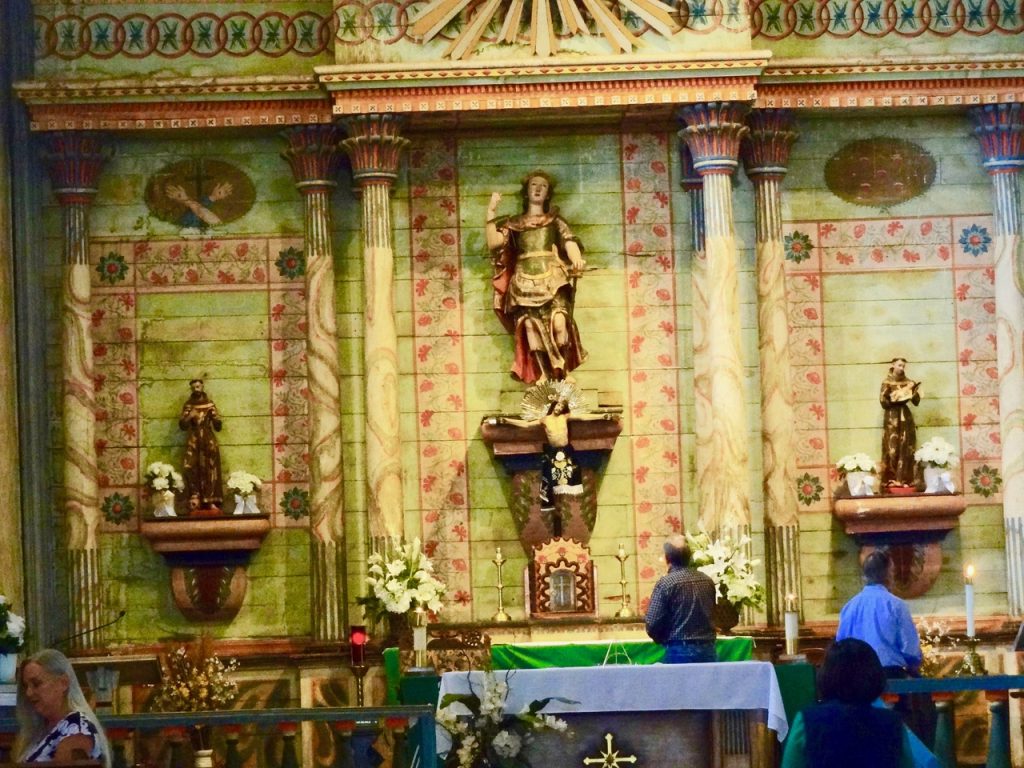

CMF was founded in 1998 with the objective of preserving and protecting the Missions. It is the only organization dedicated to the long-term preservation and restoration needs of all of the California Missions. Funds are raised from generous contributions from their corporate, foundation, and individual supporters. CMF works to fund projects in all of the Missions from stabilization of structures to conservation of paintings and artifacts and conducting archaeological research.
Nothing defines California and our nation’s heritage as emotionally as do the 21 Missions that were founded along the coast from San Diego to Sonoma. Many have morphed into our cities like San Diego, Santa Barbara, San Luis Obispo, San Jose, San Francisco, and Sonoma. They are California Historical Landmarks and many are National Historic Landmarks. Founding of the Missions began seven years before the American Declaration of Independence was signed in 1776 and ended 25 years before the gold rush in 1848.
We need to listen to the voices and the lessons of the past. To contribute or become a member of CMF visit their website Californiamissionsfoundation.org or call 805.963.1633. Their address is California Missions Foundation, P.O. Box 23035, Santa Barbara, CA 93121.
Next year’s Mission San Antonio overnight tour is set for Saturday, October 10, 2020. It’s truly special!







